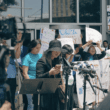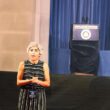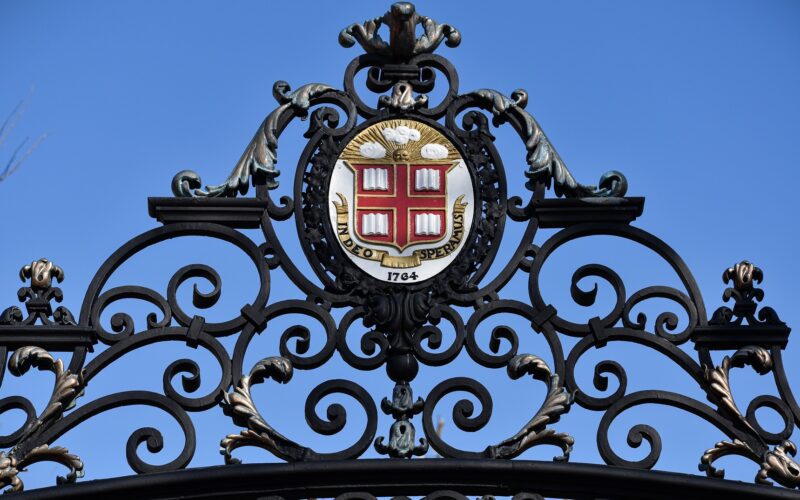Sign up here to receive The Yappie's weekly briefing on Asian American + Pacific Islander politics and support our work by making a donation.
Brown University has become the latest American university to explicitly ban oppression based on caste after adding caste protections to its nondiscrimination policy. The move by the Ivy League school follows similar action at Brandeis University, the University of California, Davis, Colorado College, and the California State University. Here's what you need to know.
The protections primarily aim to protect Dalit students, giving them the official means to report bias and discrimination, writes NBC News’ Sakshi Venkatraman.
- About 40% of Dalit students across K-12 and higher education institutions said they experienced discrimination at school in a 2018 survey conducted by Equality Labs, a Dalit civil rights group. Almost 60% of Dalits surveyed reported experiencing caste-based derogatory jokes or comments, compared to just 5-9% of the “upper” castes.
- Many Dalit students also report facing discrimination in residence and social situations, according to the survey. When their South Asian peers found out they came from a “lower” caste, Dalit students said they were asked to move to other living quarters and were excluded from South Asian student groups and professional networking circles.
- In their words: “It’s the most openly held secret,” Brown student Neha Narayan, who advocated for the policy change, told NBC News. “Even as a caste-privileged student looking in, I can see how someone would be very alienated … In an environment where caste is never discussed, how difficult is it to speak up about caste discrimination.”
A handful of universities have added caste to their non-discrimination policies in recent years. Brandeis University was the first to do so in 2019.
- “This is very important for us because we can feel safer,” Prem Pariyar, a Dalit Hindu and recent alumnus of Cal State East Bay, told CNN’s Harmeet Kaur in January after the California State University added caste as a protected status. “At least the university has a policy to recognize our pain and to recognize our issues.”
- Pariyar added that more can be done, saying there should be caste competency training at universities and caste protections statewide.
Context: Caste is an oppressive religious and social classification system prevalent in South Asian communities that ranks individuals in four main classes in a hierarchical tier of “high” to “low” castes, with “lower” castes historically denied the same kind of access to resources and opportunities. Outside of the system are Adivasis, who are Indigenous South Asian people, and Dalits, who are considered the lowest in status.
- Solidified under British rule in the late 19th and early 20th centuries, the caste system was formally abolished following India’s achievement of independence in 1948.
- Its effects of social stratification and economic inequality are still present in India today, but its cultural legacy continues to persist within India and other South Asian countries such as Pakistan, Nepal, and Sri Lanka—as well as their diasporas.
In the U.S. today, there are an estimated 5.4 million South Asians—the majority of whom are Indian. According to a 2020 survey published by the Carnegie Endowment for International Peace, roughly half of all Hindu Indian American respondents said they identify with a caste group. Roughly 80% of Hindus with a caste identity said they belong to a “General or upper caste” background.
- With the high concentration of South Asians in Silicon Valley, the tech industry in particular has struggled to address caste-based discrimination in recent years.
Counterpoint: Some who oppose explicit safeguards against caste discrimination argue that discussions about caste unnecessarily divide South Asians, claiming that caste protections would further provoke hate against Hindus on campus.
- In October, two Hindu professors at California State University filed a lawsuit against the school, arguing its caste protection policies unfairly target Hindus by assuming Hinduism mandates a racist and discriminatory system. No other protection in CSU’s non-discrimination policy addresses any specific ethnicity, ancestry, or religion, the lawsuit claims.
- Yes, but: “At the end of the day, you can’t force someone to not be casteist, but you can force them to be careful about how they’re casteist or what they say,” M. Bangar, an alum of Cal State Sacramento, told CNN. “These caste protections create an opportunity for people to report the things that they face.”
This story appeared as "The Big Story" in The Yappie's Dec. 12, 2022 newsletter.
The Yappie is your must-read briefing on AAPI power, politics, and influence, fiscally sponsored by the Asian American Journalists Association. Make a donation, subscribe, and follow us on Twitter (@theyappie). Send tips and feedback to [email protected].









